I HAVE to admit, I was not aware prior to my interview with Patt Gunn and Lauri Lyons that Georgia was a slavery-free colony upon its founding in 1732. It wasn’t legalized until 1751, when slaves from West Africa and the Caribbean were brought into the city to build its infrastructure.
In 1763, the city of Savannah designated a burial ground for Black people, where they were allowed to bury their dead. That burial ground was closed in 1851 and ultimately redesigned as two public squares—Calhoun Square and Whitefield Square.
Calhoun, as many are aware, is John C. Calhoun: the former Vice President who was a proud slave owner and slavery proponent. He even wrote influential essays about white supremacism that supported the oppression of Black and Indigenous people in the United States. Whitefield is Reverend George Whitefield, an evangelical pastor who fought hard to maintain slavery in Georgia and spoke openly about the fact that he believed slavery to be essential to financial prosperity.
Nearly two centuries later, influential Savannahian Patt Gunn—founder of Underground Tours of Savannah—has partnered with activist and author Lauri Lyons to not only rename those two squares, but expose the painful truth of that former burial ground: that despite claims to the contrary, the bodies buried there were never removed. That partnership is Rest With Honor Savannah, a growing initiative that was sparked in part by recent events.
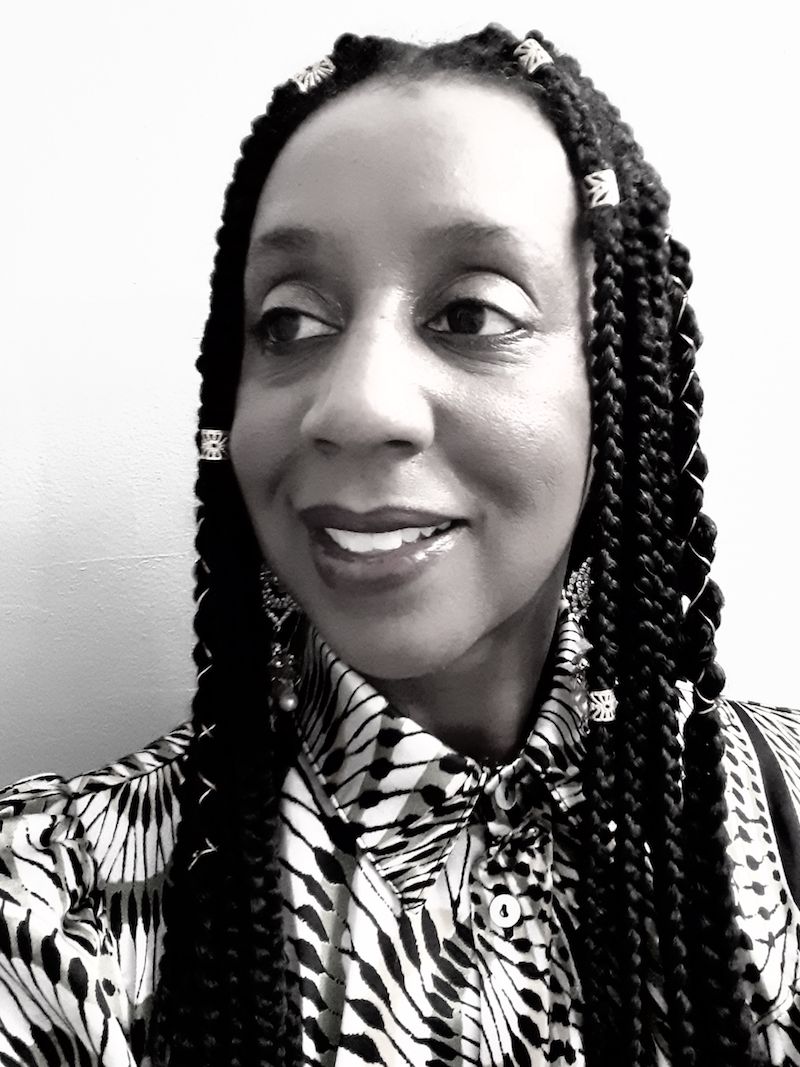
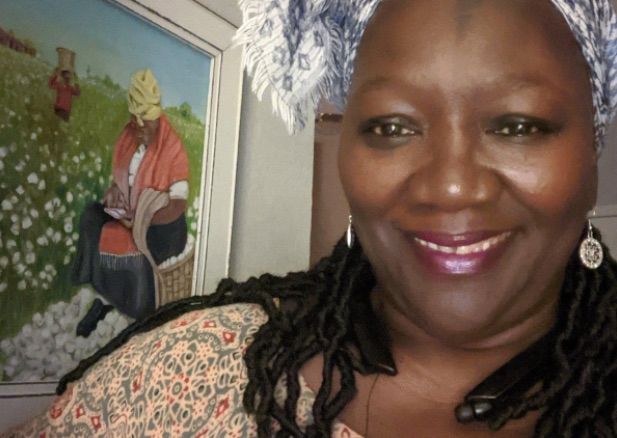
An ancestral assignment
“I first went to Savannah when I was invited for a press trip in 2017,” Lyons explains from her home in the Bronx. “The press trip was focused on the booming film industry in the city. I had some extra time and decided to go on a walking tour of the city. It was a ghost tour, and as we were making our way to the different parts of the city, we went to what I found out later was Calhoun Square.”
Lyons recalls the tour guide “casually” mentioning that there were rumors about an African burial ground in the square at one point. The guide never elaborated as to why they suspected that or came to believe it, but Lyons says she got a “very intense feeling” that something was wrong there.
“Something had to be done about the situation of there being a possible burial ground. It was a very visceral feeling, and while we were there the tour guide mentioned that area having the most documented paranormal activity in the city. So a lot of strong, bad vibes there,” she says.
When she left Savannah and returned to New York, Lyons says the tour remained constantly in her thoughts.
“This idea of researching whether that rumor had any fact to it just kept tapping me on my shoulder,” she admits. “Around the time that George Floyd was murdered in Minneapolis, I really started thinking more about social justice and unrest. I have a history of working in media, in documentaries and cultural stories, but I’d never had this particular feeling about a story.”
She began researching and getting in touch with Savannah Municipal Archives to figure out if the story might possibly be true. Soon, she realized that there was an opportunity to create a coalition to support the idea of building a memorial and getting the burial ground recognized.
Enter Patt Gunn, who has made it her life’s work to be a storyteller in Savannah through her cultural heritage destination tour Underground Tours of Savannah. She’s also an authentic Gullah Geechee slave re-enactor and a genuine “daughter of the soil.”
“Lauri is a godsend. Her work and research validated what we always knew locally; we just didn’t have the confirmation. We were raised as Gullah Geechee folk. I was born and raised in midtown, not far from Forsyth. We were used to walking downtown, and we were always told that there was a burial ground there, somewhere. We just didn’t know where,” Gunn says.
“When she contacted us, of course we were ready to help her in any way. We need to have the truth told about where our ancestors dwell. There are sacred spaces, regardless of whether something ugly happened. It’s ugly and traumatic to know that someone’s burial grounds are now places where people live. We’re just elated that Lauri came to town and was given what we call an ancestral assignment.”
Time for truth-telling
“It’s time for reconciliation, healing, and repair,” Gunn says firmly. “And for us to heal, we must have those names replaced at those burial grounds.”
The rewriting of history is nothing new in America, certainly as it pertains to slavery and the reality of life in this country for Black Americans. The murder of George Floyd was a particularly blatant example of the racism that is embedded in the U.S., and the lynching of Ahmaud Arbery in nearby Brunswick is a close-to-home reminder of the reality that Black people have faced daily.
The partnership of Gunn and Lyons means that the open wound that still exists from this country’s greatest shame will no longer be ignored and ultimately infected, at least in the city of Savannah. Through Rest With Honor Savannah, a small part of this wound might finally be healed for the progression and greater good of society.
For Gunn and Lyons, this work is deeply personal.
“For me, I’ve said to Patt many times that I didn’t have a choice with this project. It’s something that literally, physically and spiritually, grabbed me,” Lyons says.
Researching the truth behind Calhoun Square and Whitefield Square was an investigative process, brought about by combing through historical records and carefully putting pieces together that exposed some hard truths about the way things have been framed publicly in the city as it pertains to this issue.
“The research process was very intense, because you have to start from the perspective of something that’s possibly a rumor and a ghost story. You have to weed through that and find nuggets of truth, and then when you find those it’s about getting in touch with the Archives department and online databases. You also have to talk to residents over the phone because there’s oral history here that wasn’t documented,” Lyons explains.
“Looking at data and being able to see a narrative and patterns showing up is part of this as well. The information then becomes a story that makes sense.”
Of course, what’s perhaps most challenging about a project like this is the emotional and mental toll it takes to dive into truly dark and disturbing parts of history.
“This isn’t just about statistics and data. When you are actually reading documents from the 1800s—city ordinances that are page after page after page of all of these detailed descriptions of how Black people’s lives were controlled, manipulated and discarded—it does something to you. It doesn’t matter what background you have; if you start reading material like that about your own ethnic group, it’s really hard to take in,” Lyons says.
Lyons says that what was most compelling about this initiative was the fact that it presented an opportunity to tell a story that has never really been acknowledged.
“It’s the equivalent of colonial town Williamsburg totally being a secret,” she says. Gunn agrees wholeheartedly.
“That’s a great description in terms of being comparative to Savannah,” Gunn says.
“This is something that’s an important project for me. I look at my parents’ generation; they were born at the turn of the century: my father in 1910 and my mother in 1920. They were not people of African descent in Savannah who were afraid. They had lots of strength and courage.
"But what I realized is that the trauma of what they experienced post-slavery [meant that] they didn’t talk about sacred places and spaces downtown. They didn’t tell those stories. So to now identify and have verification through Lauri’s work; I have to help her.”
Gunn references the South African word “azuka,” which is from the Zulu tribe and means “help is imperative.”
“It’s imperative that I help her to bring all of the folks forward that are needed to get this done,” she says. “But don’t get it twisted: it’s still traumatic to do this work, as Lauri says. The strength that we’re using to do this is not a strength of just pressing forward. It’s an ancestral strength. In every step that is taken, we feel the spirit of our ancestors and they’re saying. ‘Tell our story, and help us to rest with honor.’”
Correcting the narrative, exposing reality
Challenging existing narratives was also a big part of the research process, and it’s something that led to a major revelation amid Gunn’s and Lyons’ work together. I made it a point in my conversation with Lyons and Gunn to ask about their discovery that the bodies of those buried in the grounds were never actually removed.
Was this something that the City of Savannah was previously unaware of, or was it suggested prior to their discovery that the bodies were, in fact, removed?
“The City of Savannah had stated, up until June or July of 2020, that all of the bodies had been removed from that burial ground area. They even said that they had a number of how much it cost that was in some record,” Lyons says.
“I found that strange. The reason why I found it strange, and this is the cultural context again, is because if people were enslaved, tortured and killed, why would the city be spending money to make sure that they had a proper burial? That doesn’t make sense.”
“In other words, they didn’t matter,” Gunn adds.
“If you didn’t matter while you were alive, why would you matter when you’re dead and can’t make money for us? We’re going to spend money on you? I don’t think so,” Lyons says.
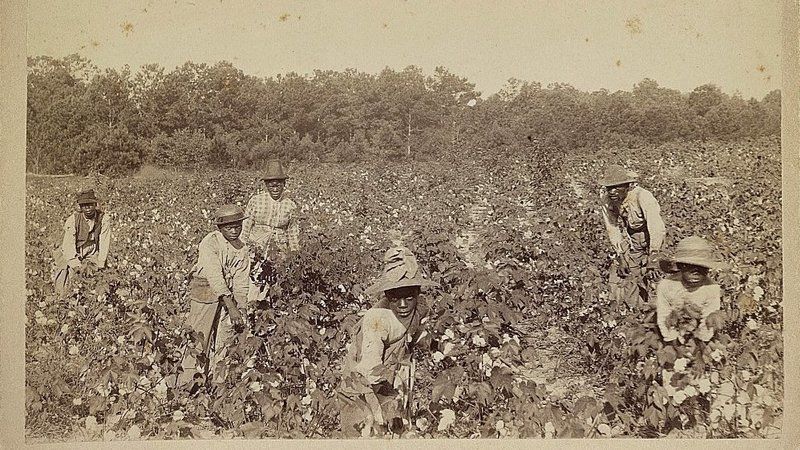
“You’re talking about slaves that are purchased in the auction blocks of Johnson Square and Ellis Square. You have to purchase your slave from the slave captain, walk to 25 Bull Street and get insurance on your slave, and then you do a closing so that you have ownership on that person,” Gunn explains further.
“You’re also talking about being in urban houses that planters own, and then dying, and [the owners] digging holes in the backyard and wrapping your body in cheesecloth and just putting dirt on the top of you. Until there was a slave revolt. So I can’t imagine them putting any money into transferring bodies or any of that, because we never mattered from the very beginning at all.”
Lyons also cites city ordinances that stated if bodies were transferred to the cemetery, a record had to be kept. Given the ordinances, Lyons requested records from city officials to no avail.
“They just didn’t have the documents,” she says, adding that she also requested the accounting of the supposed $732.45 that the city claimed was spent on removing the bodies. No accounting was found, and finally in September it was confirmed to Lyons and Gunn that there was no record of the bodies ever being removed.
There’s a major question here that lingers upon learning of the holes in this disturbing narrative: was this a long-held lie that had become an accepted “truth” over time, or has the city always been aware of the actual truth?
“I would have to say it’s a mixture of things. In 1763, the City of Savannah designated those areas solely as Negro burial grounds. And the documentation of that was signed by the people running the city. That document has been in the archives for 264 years. There were also maps that literally described that area in writing as a Negro burial ground,” Lyons says.
“How is it that the area surrounding the burial ground is nationally landmarked and preserved as part of the downtown Historic District, but the burial ground itself has never been publicly recognized or supported by the city to the general population? In 264 years?”
“It’s a verification of either revisionist history, or just simply redacting history,” Gunn adds.
“There are no indicators of verification downtown either in terms of where the slaves disembarked, where the whipping station was, or where they were held. There are all kinds of things that have not been verified in this downtown historic area. It comes back to the question of, ‘Did our lives matter?’ I don’t think they did.”
In a world where there seems to be a faction of people who are quick to defend monuments, squares, and streets dedicated to slave owners and Confederate soldiers as being “part of history,” why is it that things of actual significance to our country’s history are being redacted and ultimately removed from public awareness?
Savannah is unique
My assumption is that this is an unfortunate reality all over the country. Gunn is quick to emphasize the opposite: that, most unfortunately and infuriatingly, Savannah is “unique” in their revision and redaction.
“Savannah is unique. This is the third port of entry for slavery. If you go to Richmond, Virginia, they acknowledge the slave trade. They have monuments and markets commemorating what happened. If you go to Charleston, they have a market. Savannah says, ‘This is a romantic city, and we want you to just focus on the romanticism and Spanish moss. We don’t want to talk about slavery,’” she says.
“We have no markets. We only have post markets. Bay Street should be the most famous street in Georgia for people of color, because that’s the street where 100,000 federal troops came marching in on the 21st of September. We let Galveston, Texas, commemorate Juneteenth nationally, when Savannah had its ‘Juneteenth’ six months earlier.
“We don’t want to talk about what happened here. They don’t want to talk about who built this city. There’s a marker downtown in the slave holding bins that they won’t acknowledge where it says, and I quote, ‘An urban legend suggests’ that enslaved Africans were brought here in the mid-1800’s. The second sentence says, ‘There’s no evidence to verify that.’”
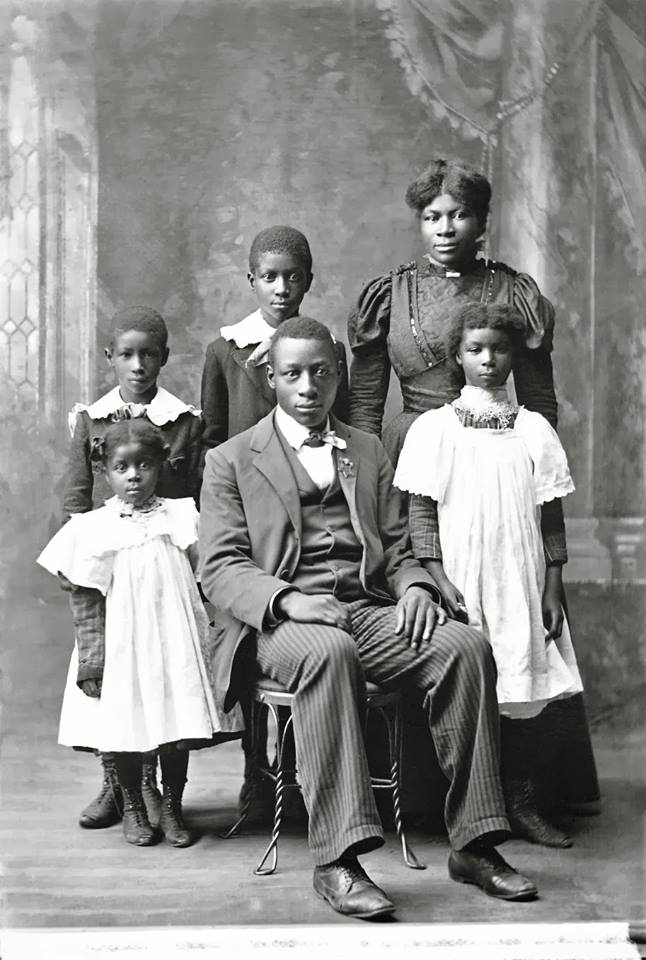
Gunn says she walks that area every day on her tour, and that people stand there and weep because of how unimaginable it is that something as significant as that would be designated an urban legend.
“Somebody built all of these beautiful buildings, and I think they were kidnapped Africans from West Africa,” she says.
“I think it’s important to say that it’s not just a choice by the city to not talk about slavery. What they’re really doing is cutting Black people out of the history and the story of Savannah,” Lyons adds.
What happens next
Given the monumental research Gunn and Lyons have done to rename the squares and push the city to formally acknowledge the burial grounds, it begs the question: what happens next for Rest With Honor Savannah?
“We’ve had all of our research confirmed and vetted. It’s accurate. We’ve had a geographer compare the site past and present with maps and computer animations, and has confirmed where the site is. Also, we’ve started a social media campaign and started some press outreach as well,” Lyons says.
“We’re also submitting the application to have the names of the squares legally changed, and have done outreach to local residents to tell them the facts and history so they can come on board and participate.”
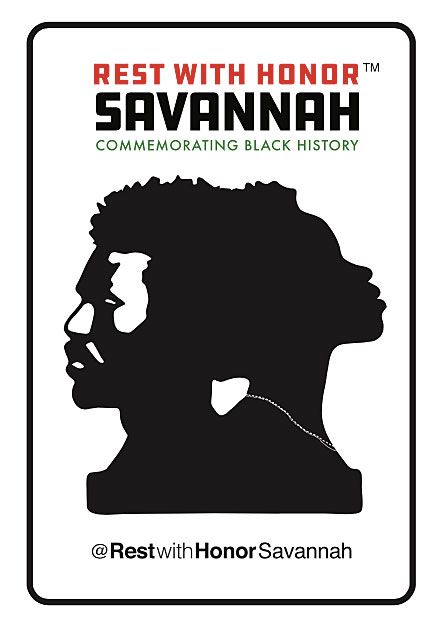
Lyons and Gunn have also started to do outreach beyond Savannah, in order to give people throughout the country the opportunity to learn about this crucial part of history.
“We want people in other parts of the world to learn about this story. It’s very important to steer the narrative in the correct lane to ensure that it’s told correctly, respectfully, and truthfully,” Lyons adds.
The four-prong effect
There seems to have been a national reckoning in regard to race and equality in this country when Floyd, Arbery, and Breonna Taylor—among others—were murdered earlier this year. The work that Lyons and Gunn are doing as Rest With Honor Savannah seems to be, in part, a response to those events and the yearning for deep and lasting change. But there was also a momentum that couldn’t be ignored and needed to be capitalized on in productive and vital ways.
“I felt it was important to start doing the research on this story because I felt there was definitely a shift in energy after George Floyd’s murder. There’s definitely a change that is taking place, but we have to see how long it can be sustained. All of these things we’re talking about have been going on in this country for forever, and people just at a certain point were just like, ‘Okay, we’ve had it,’” Lyons says.
“It’s been building up for so long. This problem is older than America. So people have had it. People want truth.”
“I would call it a tipping point. I think we’ve reached a tipping point. In 2021, 400 years after the slave trade, I think we are at a point of critical mass. The four-prong effect is important right now. The truth comes first, and then reconciliation. And after reconciliation, we should have some healing. After some healing, we’ve got to do some repair,” Gunn adds.
“The repair has to be applied to these new generations. They deserve to have some happiness and not have to worry about being pulled over by an officer and fearing they’re going to lose their lives. Replacing the names of these squares in Savannah is the first test as to whether or not we’re willing to move forward. But we must move forward. We must.”
Learn more about Rest With Honor Savannah, and how you can get involved, at their official Facebook page.

